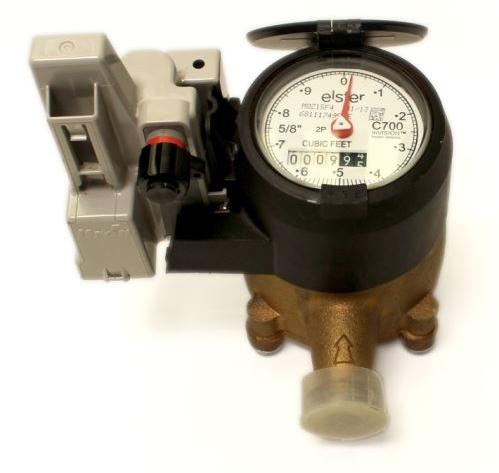The article underneath about Low Water Pressure in the House? is indeed remarkable. You should investigate it.

Low tide stress in your house can be a discouraging trouble, affecting every little thing from bathing to cleaning meals. If you're experiencing weak water flow, there are several feasible reasons and options to explore. In this overview, we'll review typical reasons for low water pressure and sensible actions to attend to the problem successfully.
Introduction to Low Water Stress
Low water stress occurs when the flow of water from your faucets, showers, and other components is weak than normal. This can make everyday jobs more challenging and much less reliable. Recognizing the root causes of low tide stress is vital to locating the best solution.
Usual Root Causes Of Low Tide Pressure
Faulty Pressure Regulatory Authorities
Pressure regulatory authorities are in charge of keeping consistent water pressure in your home. If they malfunction, it can cause low tide stress or irregular flow throughout your house.
Local Supply Of Water Issues
Often, the issue exists outside your home. Community water system concerns, such as main line leaks or upkeep work, can momentarily minimize water stress in your location.
Pipeline Obstructions
Gradually, pipes can come to be obstructed with mineral deposits, debris, or particles, limiting the circulation of water. This is an usual issue in older homes with galvanized steel pipelines.
Corrosion
Rust within pipelines can result in leaks and lowered water pressure. Rust accumulation can tighten water flow, especially in aging plumbing systems.
Exactly How to Detect Low Tide Pressure
Examining Pipelines
Inspect visible pipes for indications of leaks, deterioration, or obstructions. Pay attention to any uncommon noises, such as knocking or rattling pipelines, which could show issues within the plumbing system.
Consulting with a Plumber
If you're incapable to determine the cause of low tide pressure, think about employing an expert plumber to carry out a thorough assessment. They can determine underlying problems and suggest ideal remedies.
Checking Faucets and Components
Start by checking the water stress at various faucets and components throughout your home. If the issue is isolated to particular areas, it may suggest local problems.
Do It Yourself Solutions to Repair Low Water Stress
Flushing Hot Water Heater
Debris accumulation in the water heater can limit flow and minimize efficiency. Purging the container regularly aids remove debris and maintain optimal performance.
Examining Stress Regulatory Authority
Make sure that the pressure regulatory authority is operating properly. Changing or replacing the regulatory authority can assist recover proper water stress throughout your home.
Cleaning Up Aerators and Showerheads
Mineral deposits can gather in aerators and showerheads, decreasing water flow. Eliminate and cleanse these parts frequently to improve water pressure.
Clearing Up Clogs in Water Lines
For small blockages, attempt making use of a plumbing snake or chemical drainpipe cleaner to clear blockages in pipes. Beware when making use of chemicals and adhere to security guidelines.
When to Call a Professional Plumber
If do it yourself efforts stop working to solve the issue or if you suspect substantial plumbing problems, it's finest to look for help from an accredited plumber. They have the experience and tools to attend to intricate concerns securely and properly.
Safety Nets to Preserve Water Stress
Mounting a Pressure Booster
Consider mounting a pressure booster pump to boost water pressure in locations with regularly reduced flow. This can be specifically useful for multi-story homes or residential properties with high-demand components.
Surveillance Water Usage
Bear in mind water use behaviors and prevent ill-using the plumbing system. Straightforward changes, such as shocking showers and washing lots, can assist preserve appropriate water stress.
Normal Upkeep
Schedule routine maintenance for your plumbing system to prevent problems such as corrosion, leakages, and blockages. Addressing minor issues early can assist avoid even more significant fixings later.
Conclusion
Handling low water pressure can be irritating, but recognizing the underlying reasons and carrying out ideal remedies can bring back optimum flow throughout your home. Whether it's cleaning aerators, evaluating pipelines, or seeking advice from a plumber, taking positive steps can ensure a consistent supply of water for your everyday requirements.
FOUR WAYS TO FIX LOW WATER PRESSURE NOW
Turning on a shower or faucet only to find the water comes out in a sad, slow drizzle is never a good feeling. How exactly are you supposed to wash a pan or take a quick shower when it takes 10 minutes just to rinse off a little soap? The good news is that when your water pressure is bad, there's always a cause: typically one that can be easily fixed. Here are some of the most common causes of low pressure and what you can do to fix the issue:
DEBRIS AND MINERAL DEPOSIT BUILDUPS
If you notice low water pressure from just one or two of the fixtures in your house, the problem likely has to do with debris buildup. Water is full of minerals and other debris, all of which can accumulate in your pipes and on your fixtures. This can cause a blockage that affects how much water flows through. To fix this, try filling a small plastic bag with white vinegar, and use a rubber band to hang it around your showerhead or faucet. Let the head of the fixture soak for a few hours, and the vinegar should loosen the deposits.
WATER LEAKS
Leaks are another common cause of low water pressure. If water is flowing out of your plumbing through a hole or crack before it can reach your fixture, the pressure coming out of the faucet or showerhead will be lower. A plumbing professional is your best bet for finding and repairing a leak in your water supply pipes.
Leaks are another common cause of low water pressure. If water is flowing out of your plumbing through a hole or crack before it can reach your fixture, the pressure coming out of the faucet or showerhead will be lower. A plumbing professional is your best bet for finding and repairing a leak in your water supply pipes.
A VALVE ISSUE
If you have low water pressure throughout your home, check your main shut-off valve to make sure it's completely open. You may also want to see if there's a pressure-reducing valve installed. If there is, have a plumber help you adjust the settings to get the pressure you're looking for.
OTHERS USING WATER
Believe it or not, your low water pressure could be caused by your neighbors. If you notice low pressure at certain times of day, it may be because you and the people living next to you have similar schedules - when everyone is showering at the same time, the pressure will be lower in every home. Low pressure throughout the neighborhood may also be caused by an issue with your municipal water supply. If that's the case, call the supplier to see if they're working on the issue.
https://www.rotorooter.com/blog/water-leaking/low-water-pressure-fixes/

As an avid person who reads on 10 Reasons for Low Water Pressure in Your House, I assumed sharing that excerpt was beneficial. Do you know another individual who is curious about the topic? Feel free to share it. Thanks so much for your time invested reading it.
Further Details